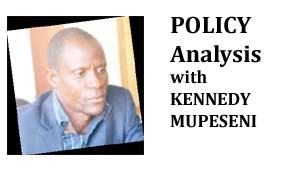THE reaching of the third Staff-Level Agreement (SLA) on economic and financial policies that will anchor programme implementation for the next 12 months cannot slip under this column.
On Monday this week, Zambians received the good news that Zambia and the International Monetary Fund (IMF) staff have reached a Staff-Level Agreement (SLA) on economic and financial policies that will anchor programme implementation for the next 12 months.
This follows the second review mission under the Extended Credit Facility (ECF) Programme.
I am told ,SLA is subject to approval by IMF management and the executive board but this is a show of the confidence of the international lender in the country’s fiscal policy.
The IMF executive board’s move will trigger the third disbursement of about $184 million that will go a long way in stabilising the country’s import cover and may have a huge impact on the stability of the local currency.
This is part of the arrangement that was approved by the IMF executive board on August 31, 2022, for a total amount of Special Drawing Rights (SDR) 978.2 million, or about US$1.3 billion.
In the statement, the IMF staff commended Zambia for substantial progress in restoring macro and debt sustainability and implementing the national economic reform agenda.
They observed that Zambia’s ambitious structural reforms have contributed to raising domestic revenues, strengthening public finance and debt management, and increased transparency.
The Government is further commended for being able to finance vital social spending on healthcare, education and support for the most vulnerable.
It is not a secret that the IMF Programme provides the much-needed support for Government to achieve fiscal and debt sustainability, reduce poverty, and lay a solid foundation for inclusive and sustainable growth.
The lender of the last resort also observes that the SLA on the second successful review marks an important step in Zambia’s cooperation with the IMF and the country’s journey towards economic recovery.
On the other hand Finance and National Planning Situmbeko Musokotwane states that the achievement of the SLA reflects Zambia’s commitment to restore macro and debt sustainability and to continue efforts to reach an agreement in the debt restructuring that is consistent with the IMF program parameters.
He hopes to complete the debt restructuring as soon as possible as the treasury engages closely with creditors to achieve the milestones.
Zambians need to appreciate that the journey to restore the country’s macroeconomic stability is a tough one given the heavy debt burden the country has been grappling with.
The Government should remain resolute by continuing implementing fiscal measures that can relieve the country from the debt burden and position the economy on the growth trajectory once again.
The fiscal prudence coupled with transparency and accountability have led milestones like the debt restructuring under the Common Framework and will help in achieving the desired results.
Aside from the efforts to restore the country’s fiscal stability, there is need for more efforts to galvanise the mining and agriculture sectors and align them to start contributing effectively to the country’s economy.
As a matter of urgency, there is a need to unlock Mopani Copper Mine (MCM) by quickly concluding the negotiations to bring in a new investor so that the mining giant starts ramping up production.
It is good that the long-pended Konkola Copper Mine (KCM) another cash-cow for Zambia is unlocked to the extent that Vedanta Resources Limited has started resetting base to start injecting capital into the mine once all legal formalities are concluded with the courts of law.
The Government should in addition find a quick fix to Kasenseli Gold Mine that has not been in production for more than two years now.
Issues hindering the resolution of the matter involving the community and ZCCM Investment Holdings need to be resolved.
Gold prices on the international market are on the upswing and it is tipped to reach around $3 ,000 per ounce in the next five years from the current average of US$2,000.
Commodity analysts hold that when the global economies are facing arecession or economic slump, investors rush to buy gold as a store value hence boosting demand for the precious mineral in turn higher prices.
New minerals like sugilite, lithium and the rumored graphite discoveries should be stimulated so that they start adding to the treasury to offset future debt once they are restructuring.
It is good and commendable that the Government has declared sugilite, lithium, nickel and gold as strategic minerals and have started facilitating acquisition of mining licenses through cooperatives.
This will go a long way getting more revenue that is currently slipping through the hands of the illegal miners and dealers.
In the agriculture sector, there is need for more efforts to ensure that intended reforms are made to encourage production of agriculture produce for exports and value addition to make the economy more resilient to externalities.
The Government should ensure that input distribution is handled well with minimal hiccups to encourage production.
I am confident that suggested measures and what the Government is already doing will go a long way creating a robust economy that is capable of paying future loan repayments for rescheduled debt.







